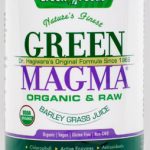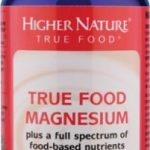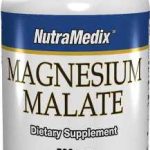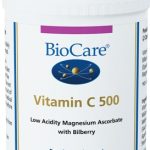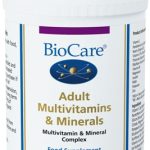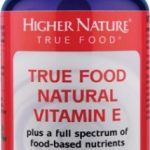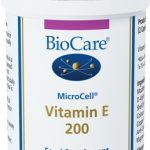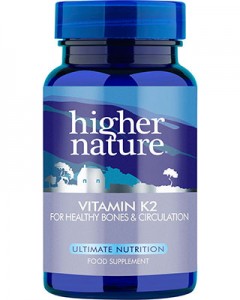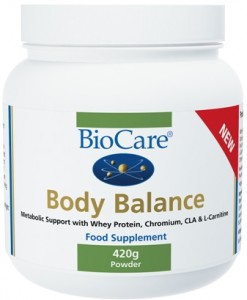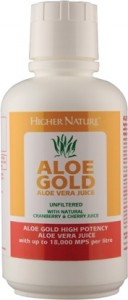Who’d believe that something so old could be so good for you? Don’t doubt it; barley grass is. It’s been a naturally-derived source for wellbeing since at least 7,000 BC; especially in Japan, where its capacity to aid digestion, detoxification and anti-ageing has long been recognised – and deeply respected. And in recent decades it’s become likewise recognised (and consumed) for these properties in the West.
Primarily, this has been thanks to the efforts of pharmaceutical developer Dr Yoshihide Hagiwara, whom had to give up his day job at the tender age of 38 due to toxic poisoning. Having fully recovered via natural medicines and foods alone, he devoted the rest of his life to investigating green foods and just what they were capable of for the good of the human body. His research led him to publish his conclusions, in which he claimed that barley grass is ‘one of the most nutritionally balanced foods in nature’ and ‘the ideal fast food for the human race’. Strong words, indeed, but it seems that this greenest of green foods and most super of superfoods is capable of backing them up.
The road to Green Magma
Technically speaking, barley grass are the young, soft shoots that crop on the barley plant and, in his experiments, Hagiwara unfortunately discovered that the multiple, health-giving nutrients stored in these shoots are destroyed by heat and acidity (when the shoots are either cooked or treated to be transformed into an easily consumable form like a supplement). In which case, he hit on the idea of a unique spray-dry process to create a different kind of extraction. Not only did this successful discovery earn him acclamation in his native Japan, it also led to his patented methods proving the basis for the manufacturing process behind the modern, highly advanced and extremely nutritious version of Barley Grass Powder, namely Green Magma.
Packed full of all the goodness of natural barley grass then, Green Magma is truly a multi-nutrient superfood that’s bursting with more than 70 vitamins, minerals, amino acids and enzymes. Among its incredible array of ingredients are:
- Vitamin A
- Vitamin B1 (thiamine)
- Vitamin B2 (riboflavin)
- Vitamin B3 (niacin)
- Vitamin B6
- Vitamin C (ascorbic acid)
- Vitamin E (alpha-tocopherol)
- Vitamin K (phylloquinone)
- Folate
- Calcium
- Iron
- Magnesium
- Phosphorous
- Potassium
- Zinc
- Beta-carotene
- Phycocyanin
- Superoxide dismutase
- Chlorophyll
- Flavonoid 2”-O-GIV
Green Magma benefits
But why is it so impressive that Green Magma comprises all these vitamins and minerals? Well, the fact it does so is what ensures it’s such an enriching, health-aiding supplement; such a potent, dissoluble powder-based (and so very easy-to-consume) version of the original barley grass. It’s the fact it comprises all these vitamins and minerals that it offers those why try it – and take it daily – so many benefits that can help bring relief to a range of conditions and illnesses. For instance:
- A natural antioxidant – owing to it containing the enzyme superoxide dismutase, Green Magma boasts terrific antioxidant properties, this ingredient enjoying nothing more than to act as a free radical scavenger, utterly neutralising the harmful effects of the opportunistic micro-organisms and so preventing the development of a whole host of illnesses caused by the otherwise resultant oxidative stress (it’s aided in these efforts by the flavonoid 2”-O-GIV); moreover, the presence of alpha-tocopherol in Green Magma successfully stimulates the release of the protein prolactin which may inhibit the growth of cancerous tumours as much as 10 times better than other versions of Vitamin E can
- May improve digestion – as barley grass has a naturally positive, stimulating effect on ‘gut friendly’ bacteria (the ‘good’ rather than the ‘bad’ bacteria to be found in the intestines), Green Magma can help in alleviating inflammation and other symptoms that are associated with gastrointestinal complaints like ulcerative colitis (UC), something which is only boosted by its handy talent for reducing aggressive bowel chemicals, as well as aiding in the flushing out of toxins from the body and assisting in the maintenance of the bowel’s fluid balance
- A natural detoxifier – all heavy metals (e.g. lead) are very poisonous to the human body and require swift removal from it, should trace levels of them been accidentally consumed and thus accumulated, and via detoxification this is something else at which Green Magma comes up trumps, specifically through the work of its trace element zinc; furthermore, barley grass’s naturally occurring chlorophyll and beta-carotene can aid the detoxing of waste mucous and crystallised acids, all of which contributes to the efficacy of the body carrying out metabolic processes and the critical detoxification work that goes on in the liver (note: those in need of detoxification may experience tiredness on first using Green Magma for this purpose; so it’s best to start with low doses of the supplement and build them up slowly over time, owing to its powerful detoxing qualities)
- May restore acid-alkali balance – in its Green Magma version, barley grass makes for a superb natural alkaline source, ideal then for reducing excess acidity in the body and preventing otherwise possible acidosis damage; to this end, thanks to its work at restoring the human body’s acid-alkali balance, it may also aid in the prevention of a wide range of differing complaints, including cardiac pain, constipation, fatigue and sleep disorders
- May improve skin, hair and nail quality – finally, Green Magma may also prove a great contributor to the regeneration of cells without side effects, which is where its ingredients including chlorophyll, iron and Vitamin C come in, as well as the pigment-protein phycocyanin, which inspires the creation of red and white blood cells and bone marrow; indeed, it’s this adept ability to aid renewal in the body that ensures Green Magma also helps to preserve hair and nail quality and keep skin looking youthful.
How to take Green Magma
A juice-based version of barley grass then (although it’s also available from The Finchley Clinic in tablet-form; see below), your best advised serving of Green Magma is via stirring a teaspoon of the supplement’s powder in a glass (160ml) of water – or non-acidic fruit juice – and drinking it up to twice a day. For best results, it’s best to consume Green Magma either 20 minutes before or around two hours after a meal; this will enable the nutrients to be absorbed as best as possible in the body. Remember not to mix the powder with a hot drink – heat may well damage the supplement’s active enzymes!
If you’re interested in purchasing and trying Green Magma, we stock the supplement in various dosages; take a look at them all below:

